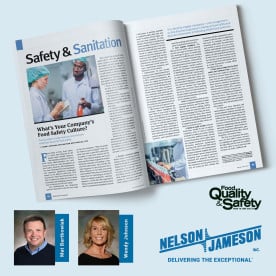Monthly Archives: December 2013
- December 10, 2013
In an effort to update our website with our customers in mind, we are conducting a survey of our website users. Your input can help us determine how to serve you better on nelsonjameson.com. We estimate it will take you approximately 5 minutes to complete the survey.
Simply click on the link below, or copy and paste the link into your browser to take the survey: http://www.surveygizmo.com/s3/
1457009/fa2d55ace7cb We would appreciate your response by January 14th.
Your input is important to us and to thank you, all completed responses will be entered in a drawing for a gift package of Mrs. Fields Cookies!
- December 04, 2013
If you haven't noticed trans fats have become a prominent public health enemy, with "No Trans Fat!" and other related sayings gracing the cover of many food products out there. The reason? A trendy health fad? Not quite.
The AP reports: "Trans fats are widely considered the worst kind for your heart, even worse than saturated fats, which also can contribute to heart disease. Trans fats are used both in processed food and in restaurants, often to improve the texture, shelf life or flavor of foods."
The growing concern about trans-fats has recently been addressed by the FDA. According to the BBC, "The FDA is opening a 60-day consultation period on the plan, which would gradually phase out trans fats" qualifying that: "The ruling does not affect foods with naturally occurring trans fats, which are present in small amounts in certain meat and dairy products."





